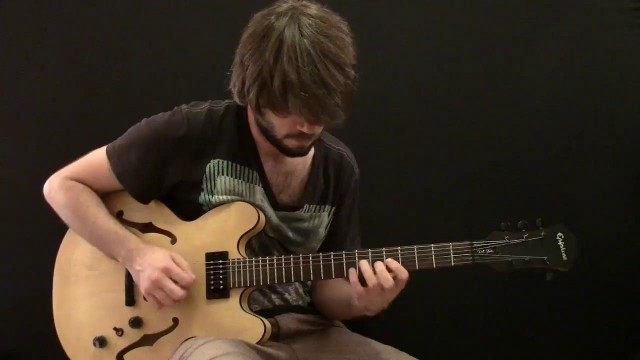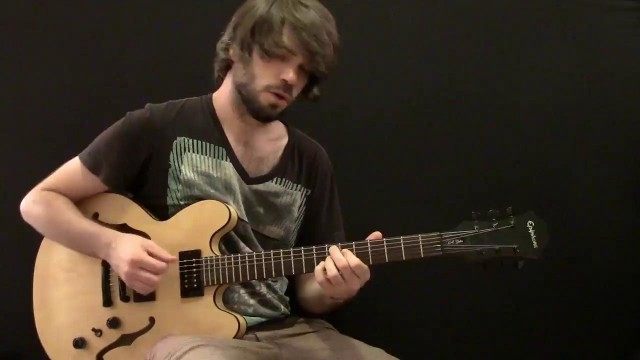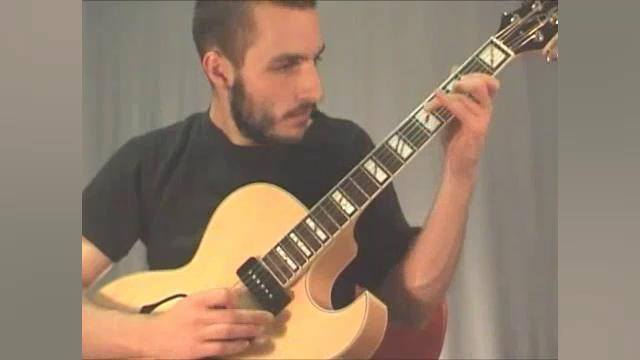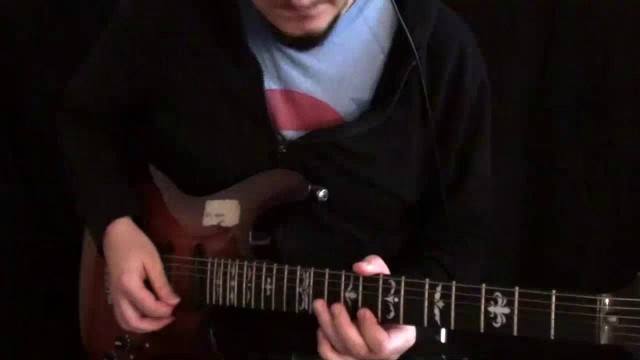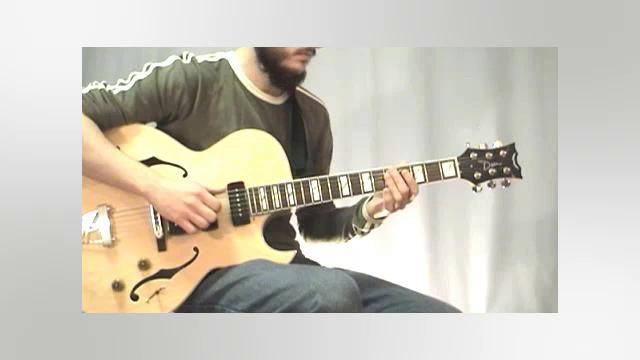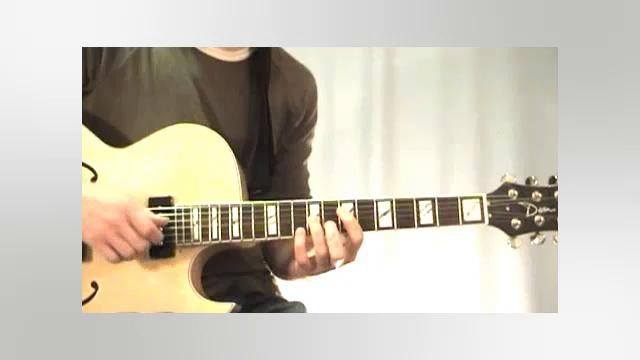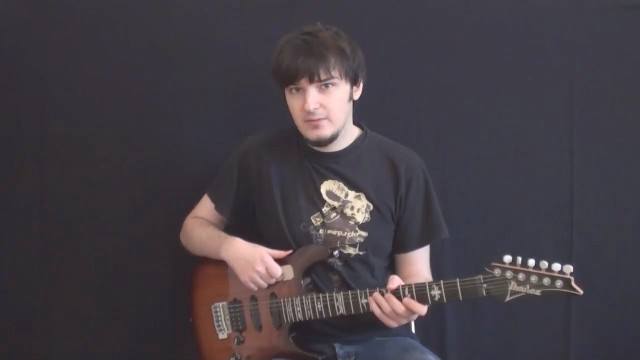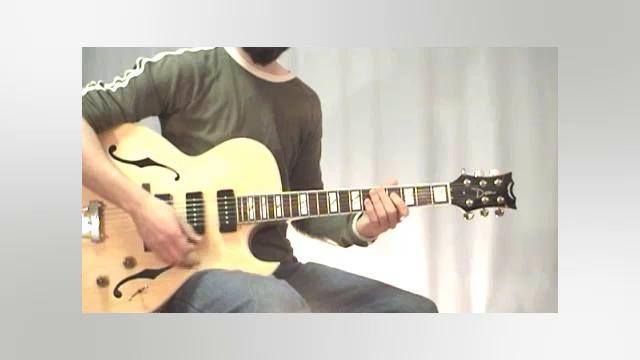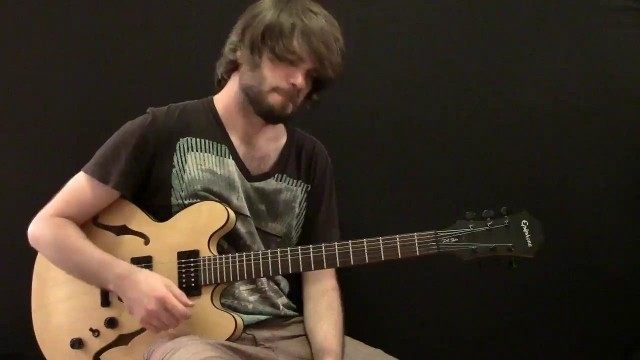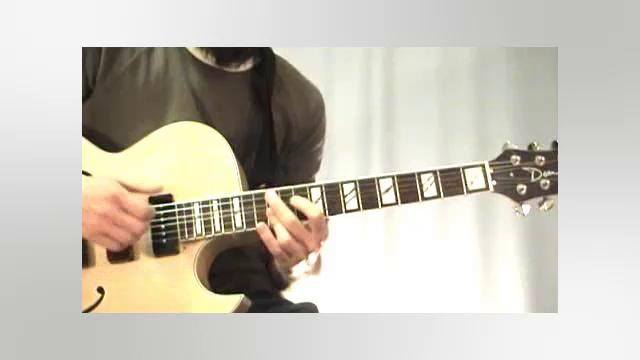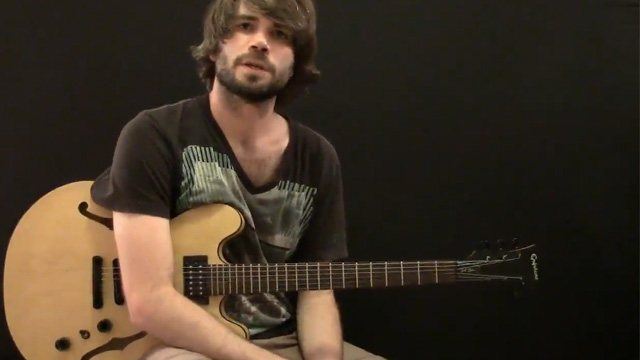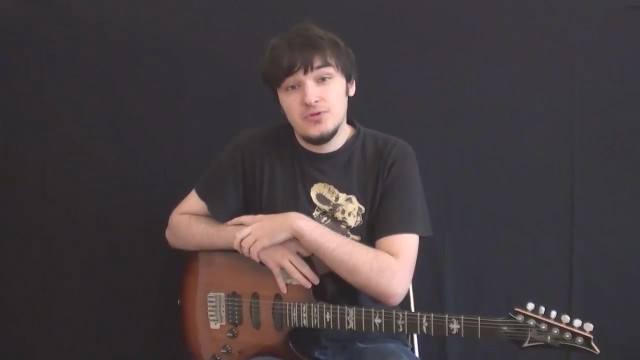Alright, now the fun begins. It’s time to solo! Just like in the previous lesson the amount of chord changes might be a bit overwhelming at first. So what we’re going to do is increase our licks vocabulary by playing through this etude I composed. It uses fairly common concepts utilized in bebop. My actual improvisational approach to rhythm changes would be a lot more modern, but I think it is really helpful to familiarize yourself with some more traditional material first.
The video shows me playing the solo fast and slow. In the text bit I’ll try to explain a few of the concepts employed. As said previously, there’ll be another tutorial with a more advanced analysis of the actual progression along with scale choices and such.
Analysis:
Bars 1-3: The bulk of the solo is made up of chord tones (root-3-5-7) of each underlying chord, combined with chromatic passing tones as in bar 2.
Bar 4: An ascending diatonic scale, note the flat 9 over the G7 chord…
Bar 7: This is so called guide tone line. See how the root of the Bbmaj7 moves a half step up to the 3rd of the G7, the 3rd of the Bbmaj7 becomes the 5th of the G7
Bars 10+11 utilize an F#m triad against F7 altered. The downbeat of bar 11 (5th of Bbmaj) is embellished from above and below chromatically (F#-E-F) and goes right into another guide tone line
Bars 13+14: Here’s a rhythmic motif that spells out more chromatically resolving chord tones (Bbmaj to Bb7: 7 moving to b7; Ebmaj to Ebm6: 3 moving to b3).
Bar 17: - D augmented triad against D7 altered (root–5#-3)
Bar 19: - same rhythmic and melodic motif as in bar 17 but the actual notes are adapted to the new harmony, very effective! The same thing happens again in bar 21.
Bar 24: This is a little trick I stole from Scott Henderson. It’s a plain B triad against an F7 altered chord. You might have noticed you it makes use of what is called tritone substitution.
Bars 25+26 showcase the use of a rhythmic motif that alternately ascends and descends. Note choice-wise it sticks closely to chord tones (except for the b9 and 4 on the F7).
Bars 30+31 conclude the solo with a long stream of 8th notes. Bar 30 is once again made up entirely chord tones and in bar 31 I just force a blues line over the actual progression. You’ll hear many bebop players incorporate these blues-ideas that. Even if those lines ignore the chord progression, they somehow seem to work. Strong rhythmic precision and a clear melodic direction are key here!
See you in the next video, where I demonstrate this solo slow and conclude the tutorial.























